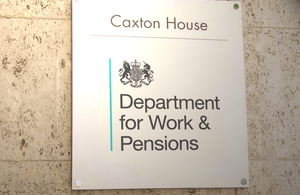The making of the Government Data Maturity Model
How was it built and what is next?
Over the past two years, the Government Data Quality Hub (DQHub), based in the Office for National Statistics (ONS), have been working to design, build, and test a single Data Maturity Model (DMM) for government. This work supports Mission 3 of the National Data Strategy, helping to transform government’s use of data for better public services. By understanding their data maturity, organisations across the public sector can better identify their data challenges and opportunities, and effectively plan targeted improvements.
The project drew on a cross-government working group and data subject matter experts from across the public sector to create a maturity model that would be truly fit for use across all of government. We also collaborated closely with the Central Digital and Data Office (CDDO), based in Cabinet Office, who will be leading the next stages of the project and be rolling out the model for the future.
In this article, we briefly overview how DQHub developed the Government Data Maturity Model from the initial background research, to building the model, and piloting it across government. We also briefly discuss the findings of the pilots and what is next for the Government Data Maturity Model.
The team behind the model will be hosting four sessions throughout DataConnect, the free public sector data conference. Hear more about the project behind the model and its future at DataConnect on Monday, 26 September 2022 at 11:00: The Government Data Maturity Model: Where has it come from and what’s next.
What are data maturity models?
Data maturity models are a structured way to measure how prepared your organisation is to make best use of the data you hold. They can help you to identify your strengths, and to pick out areas where building capability would help improve the value you get out of your data.
Knowing where to start with developing your data capability can be daunting but understanding where you are right now is an important first step. The Government Data Maturity Model is a tool to support you through assessing your current level of maturity, identifying your goals for improvement, and planning how you will reach them.
Towards data maturity for government
The landscape of data maturity assessments is vast and heavily populated. We began our work by investigating existing maturity models from across the public, private, and third sectors. Some models take a technical data management focus, others are more people-focused, examining organisational culture and engagement from business leadership. Some dive deep into specific areas of data, whilst others examine a broad, organisational view of managing and using data.
Our goal was a data maturity model that can effectively assess government organisation’s readiness to get value out of data. In line with the challenges and actions identified in the National Data Strategy, this needed to be a model to address the cultural, strategic, and technical aspects of good data management. It needed to be a single data maturity model to support improvements in all of data and be used across all of government. It was clear that the Government Data Maturity Model needs to be:
- Broad
- Thorough
- Approachable
- Relevant to the public sector
- High level and outcome focussed
- Communicable to strategic leaders
No existing model appeared to fully encompass all of these needs. However, given the range of existing, well researched maturity models, we decided to proceed by adapting an existing model.
We chose to adapt Data Orchard’s Data Maturity Framework to create the Government Data Maturity Model. The Data Orchard framework is recent, modern, and well tested. It takes a broad approach to data, encompassing technical data management, as well as culture and leadership. It is very approachable, designed to support communicating complex data ideas to non-technical audiences. The framework had also already seen some use in the public sector, including local and central government. This met many of our most important criteria, but not all of them. It made a good starting point for us to build a data maturity model to meet the needs of government.
Building the Government Data Maturity Model
The Data Orchard Data Maturity Framework was originally designed for use in the third sector. Cross-government engagement told us that whilst it is a strong maturity model, it was not completely fit for the unique needs and challenges of the public sector. The scale, scope, and complexity of data in government is vast, and needs a broad, thorough, and highly flexible approach to data maturity assessments.
Creating the new model required adding, removing, and adjusting the Data Orchard framework to meet government’s needs. We added content on aspects of data that were not already included. We removed content that is not relevant to data management in government or is below government’s minimum expectations. We adjusted the model’s language to focus on the high-level outcome to be achieved in good data practice in the public sector, without prescribing specific methods of achieving it.
Building on the Data Orchard framework with these changes led us to building a prototype of the Government Data Maturity Model that supports the outcomes we need to achieve. It gives us a model that helps organisations make a thorough, broad assessment of their data management practices. It is deliberately high-level to ensure it can be applied in the enormous range of contexts where data is used in the public sector. It is focussed on what the outcome on data practices looks like, not on the method of achieving the outcome to give the flexibility to operate in the way that works best for each organisation.
The final model assesses data maturity framed around ten core topics of data management, crosscut with themes such as culture, skills, tools, and leadership. Maturity is measured against a series of statements representing outcomes of data practice at different levels, building from a ‘beginning’ level, to a ‘mastering’ level. Hear more about the structure of the model at DataConnect on Friday 30 September 2022 at 12:00 noon: The Government Data Maturity Model: Meet the Model.
Piloting The Government Data Maturity Model
In line with many other existing data maturity models, the Government Data Maturity Model takes a self-assessment approach. However, flexibility is important for the model, to ensure that it can be used effectively despite the huge differences in how organisations operate, what data they hold, and how they use their data. Because of this, the method of self-assessment can take many forms. Several different methods of conducting assessments were trialled whilst piloting the prototype model.
In November 2021, we began piloting the model across 11 government organisations. The pilot phase ran for six months. As the single model for government needs to work for all government organisations, we worked with a range of very different organisations from large Whitehall departments to small arms-length bodies. Pilot participants were split into two cohorts, with some iteration on the model and guidance provided between each cohort.
Supported by a DQHub account manager, each piloting organisation conducted a data maturity assessment, following the guidance accompanying the prototype Government Data Maturity Model to show their strengths, understand their challenges, and identify opportunities to improve. Some used the model to assess their entire organisation, whilst others used the flexibility of the model to examine a more focused sub-section of their organisation.
During the pilot, our participating organisations trialled various different approaches in order to measure themselves against the data maturity model, and to produce maturity scores. Having flexibility in how to approach the assessment proved very important.
Hear more about the experience of using the model at DataConnect on Tuesday 27 September 2022 at 10:00am: The Government Data Maturity Model: Assessing Maturity.
Findings
The pilots proved very useful for making improvements to the model and assessing the potential value to be gained from a consistent, thorough approach to assessing data maturity in government. Over the course of the project, we found that whilst conducting a thorough data maturity assessment is challenging, the Government Data Maturity Model provides a means to effectively understand your data practices, find your strengths, and identify your areas for improvement.
We also found that although generating data maturity scores is useful, the process of conducting a self-assessment is greatly beneficial. Carrying out the assessment helps to build or reinforce connections throughout organisations, start important conversations about data, and establish data as a vital organisational priority.
What’s next?
Having developed and tested the model, DQHub have now completed our part in the Government Data Maturity Model project and the work has been handed over to the Central Digital and Data Office, based in Cabinet Office. Work is now underway to finalise governance around the model and align data maturity assessment work with wider strategic drivers in government data and digital programmes.
CDDO will be working to embed this work across government, with further rollout planned to happen later this year. Hear more about the future of the DMM and how it aligns with and supports strategic objectives at DataConnect on Wednesday 28 September 2022 at 2pm: The Government Data Maturity Model: Strategic Drivers.



